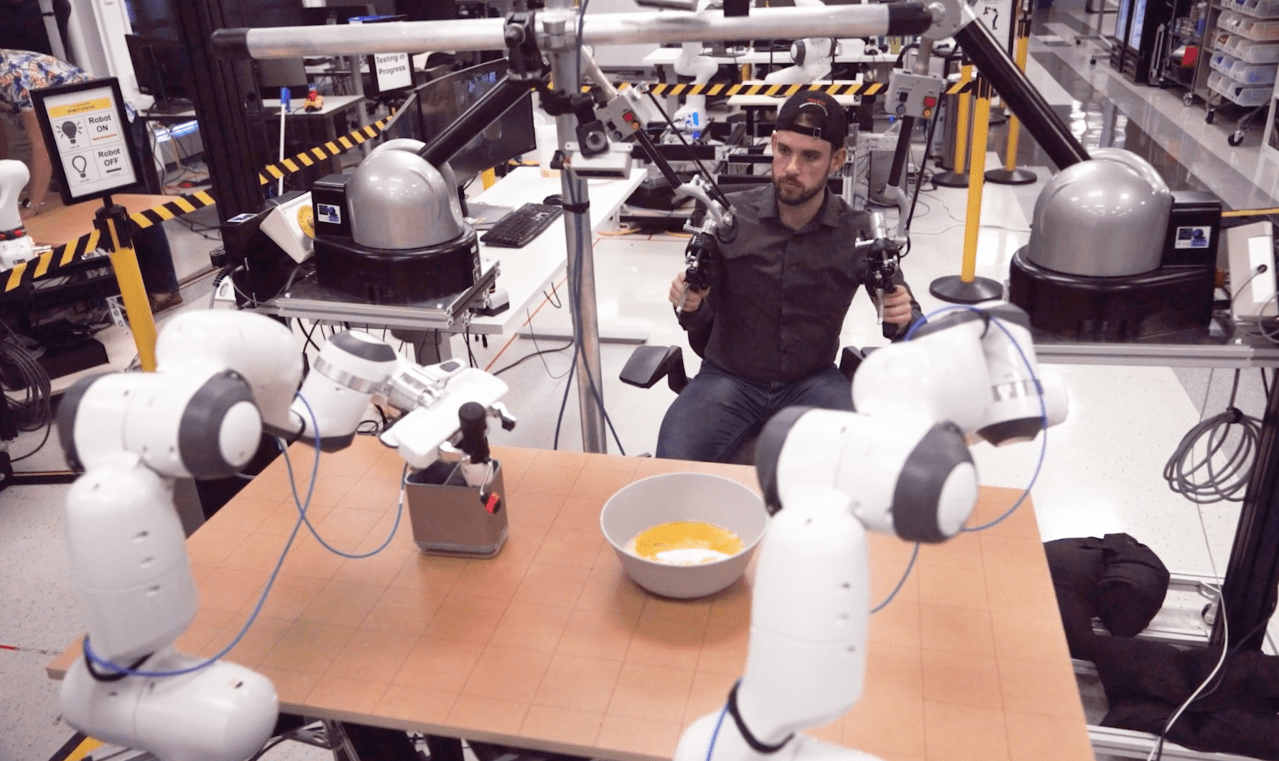Artificial intelligence is shaping various industries, but few areas are as compelling as robotics and the learning capabilities of machines. With significant developments taking place, advancements in robot learning techniques promise to bridge the gap between human cognition and artificial intelligence. At the prestigious TechCrunch Disrupt event, the Toyota Research Institute (TRI) unveiled groundbreaking methodologies that could enable robots to acquire new skills overnight, asserting their commitment to pushing the boundaries of robot learning technology.
The Dawn of Rapid Robot Skill Acquisition
When TRI’s Chief Scientist, Gill Pratt, speaks of the impressive speed of their learning method, it sends ripples of excitement throughout the robotics community. Traditionally, machine learning required vast datasets to enable effective training—in many cases, involving millions of training examples. However, TRI’s new technique dramatically decreases this requirement to mere dozens of diverse training scenarios. This innovation signifies a paradigm shift, particularly critical for robotics, as physical training is inherently limited—robots can experience breakdowns long before they’ve completed extensive training rounds.
Blending Traditional Techniques with New-age Innovation
What sets TRI’s latest project apart? The integration of conventional robot learning techniques with cutting-edge diffusion models—similarly utilized in generative AI, such as **[Stable Diffusion](https://stability.ai/blog/stable-diffusion-2-0-launch)**. By leveraging these hybrid methodologies, TRI has successfully enabled robots to learn an expanding skill set that now includes over 60 unique abilities.
Cognitive Intelligence Enhancement
As TRIs approach evolves, it harnesses the power of large language models (LLMs), allowing robots to interpret and execute commands more intuitively. Unlike previous systems requiring precise object specifications, modern robots can now adaptively recognize their tasks. Imagine verbally instructing a robot to “pick up the shiny object” instead of explaining the specifics—it embodies a level of cognitive adaptability previously thought relegated to human intelligence. As Senior Research Scientist Benjamin Burchfiel notes, while these LLMs are useful, they still struggle with complex tasks that demand nuanced interactions, such as plugging in a USB or retrieving specific household items. Addressing this gap is a pivotal point for TRI and offers expansive potential for enhancing robotic intelligence.
Adaptive Skills for Diverse Environments
The diverse environments robots must navigate add another layer of complexity. Robots excel in structured environments, such as warehouses, but household settings present a myriad of challenges—from rearranged furniture to unanticipated messes. Traditional programming methods often require meticulous pre-emptive fixes for each potential issue—an impractical approach when considering the variabilities of human households.
At TRI, the focus is on creating “general-purpose” systems capable of adapting to an array of tasks. Similar to how humans learn from experiences and adapt, these new robotic systems aim to understand their environments and develop skills robust enough to navigate unexpected changes.
The Learning Process: From Teleoperation to Autonomous Training
Teaching these advanced robots begins with teleoperation, a standard technique in robotic learning where humans guide robots through controlled demonstrations. While this method has historically been labor-intensive and time-consuming, advancements at TRI are paving the way for a more efficient training process.
Burchfiel elaborates on this innovative method by explaining the importance of incorporating multi-sensory feedback, allowing the robot to “feel” as it interacts with various objects. Throughout initial experiments, the data gathered—including sight and force feedback—provides the robot with a more complete understanding of its tasks.
Promising Early Results
Early experiments with tactile feedback have yielded impressive outcomes: flipping pancakes recorded a success rate of 90%, while tasks like dough rolling demonstrated an astonishing 96% accuracy. In contrast, performances without tactile input languished at an abysmal 0-10%. Once training is complete, the robots autonomously refine their skills overnight, utilizing a diffusion policy for optimized learning.
A Vision for the Future
As TRI looks to the horizon, the overarching goal is to create Large Behavior Models that expand the robot’s learning repertoire. Vice President of Robotics Research, Russ Tedrake, emphasizes the ambition to scale this learning process to encompass hundreds and eventually thousands of skills. With the hope of advancing robotic capabilities, researchers are on the brink of unlocking new possibilities in nonexistent and dynamic environments.
Conclusion: The Road Ahead
The advancements being made at the Toyota Research Institute spotlight the potential for a future where robots learn and adapt as naturally as humans do. The implications are monumental, particularly in assisting populations like the elderly, promoting independence in the comfort of home settings. While we may still be some distance from fully realizing general-purpose robots, TRI’s unwavering commitment to research and innovation suggests a promising trajectory. As robotics evolves in tandem with AI, the journey toward versatile, intelligent machines is well underway.
At **[fxis.ai](https://fxis.ai)**, we believe that such advancements are crucial for the future of AI, as they enable more comprehensive and effective solutions. Our team is continually exploring new methodologies to push the envelope in artificial intelligence, ensuring that our clients benefit from the latest technological innovations.
For more insights, updates, or to collaborate on AI development projects, stay connected with **[fxis.ai](https://fxis.ai)**.

